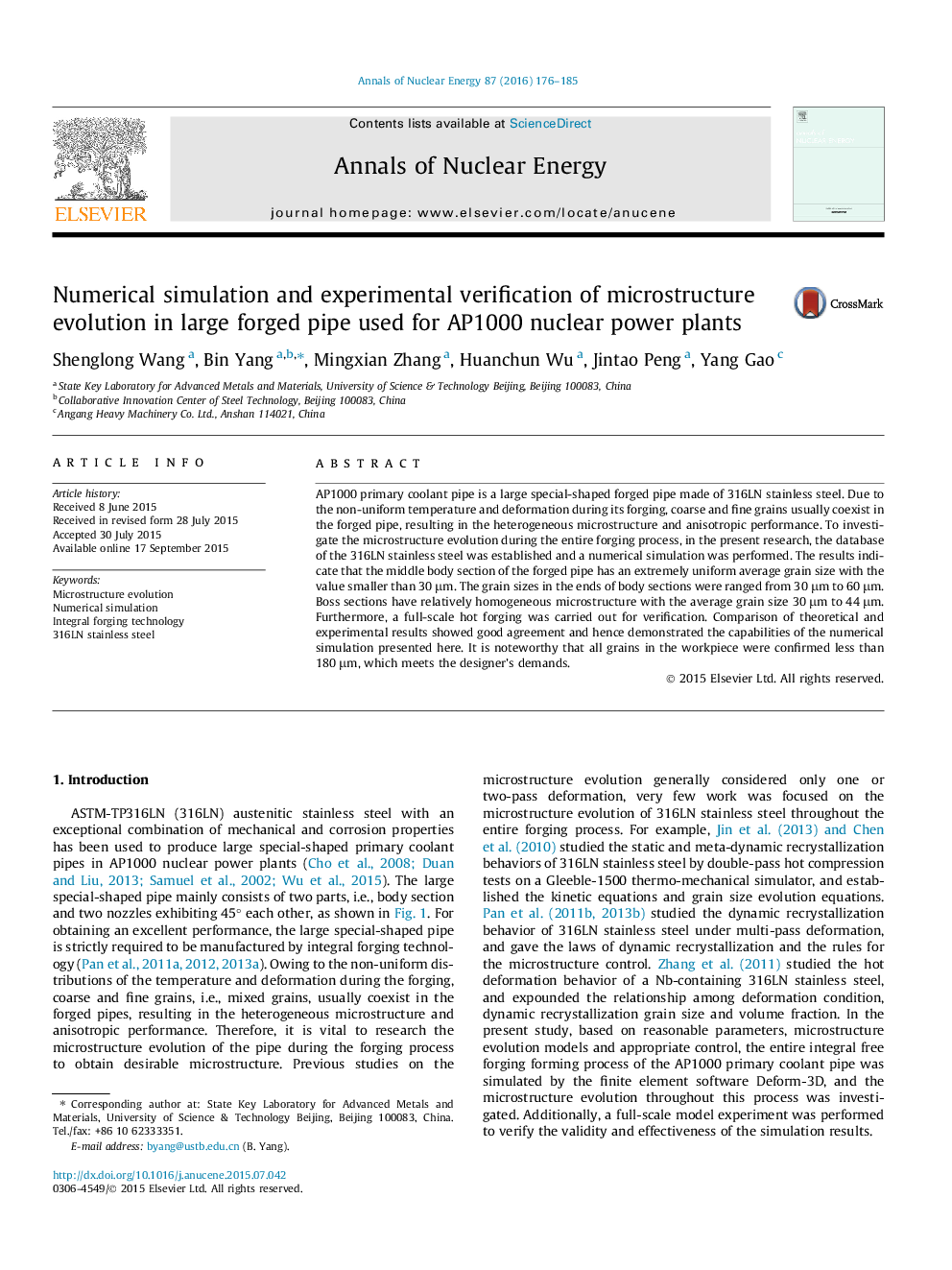| Article ID | Journal | Published Year | Pages | File Type |
|---|---|---|---|---|
| 8067992 | Annals of Nuclear Energy | 2016 | 10 Pages |
Abstract
AP1000 primary coolant pipe is a large special-shaped forged pipe made of 316LN stainless steel. Due to the non-uniform temperature and deformation during its forging, coarse and fine grains usually coexist in the forged pipe, resulting in the heterogeneous microstructure and anisotropic performance. To investigate the microstructure evolution during the entire forging process, in the present research, the database of the 316LN stainless steel was established and a numerical simulation was performed. The results indicate that the middle body section of the forged pipe has an extremely uniform average grain size with the value smaller than 30 μm. The grain sizes in the ends of body sections were ranged from 30 μm to 60 μm. Boss sections have relatively homogeneous microstructure with the average grain size 30 μm to 44 μm. Furthermore, a full-scale hot forging was carried out for verification. Comparison of theoretical and experimental results showed good agreement and hence demonstrated the capabilities of the numerical simulation presented here. It is noteworthy that all grains in the workpiece were confirmed less than 180 μm, which meets the designer's demands.
Related Topics
Physical Sciences and Engineering
Energy
Energy Engineering and Power Technology
Authors
Shenglong Wang, Bin Yang, Mingxian Zhang, Huanchun Wu, Jintao Peng, Yang Gao,
